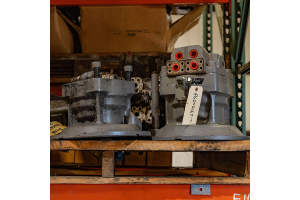
Unveiling the Terrain of Cyber Attacks on Construction Enterprises
In a digital age, even the construction industry is no safe haven from cyber threats. Hackers are increasingly targeting vulnerable construction companies, drawn by weaknesses in their defenses and the potential for substantial payoffs. Unveiling the intricacies of this evolving challenge, we delve into the vulnerabilities, attack strategies, and proactive measures crucial for safeguarding construction enterprises against cyber assaults.
Understanding the Target: Why Construction Companies Are Bullseyes for Hackers
- Construction industry ranks third among industries targeted by hackers.
- Over 13% of all cyber attacks target construction companies.
- One out of every six construction firms reported a ransomware attack.
Deconstructing Vulnerabilities: The Construction Industry's Achilles' Heel
- Inadequate firewalls and cybersecurity defenses leave openings for hackers.
- Complex digital ecosystems, with numerous devices and entry points, amplify vulnerability.
- Underestimating data value and its potential ransom demands undermines preparedness.
- Remote work exposes systems to diverse security risks, from unsecured networks to unauthorized access.
- External collaborators, subcontractors, and vendors could unwittingly become backdoor entry points.
- Reliance on outdated technology creates exploitable opportunities for cybercriminals.
The Anatomy of Attack: Ransom, Fraudulent Transfers, and Intellectual Property Theft
-
Ransom Demands:
- Hackers seize or lock away vital data, demanding ransoms.
- Work stoppages caused by disruptions lead to substantial financial losses.
-
Fraudulent Wire Transfers:
- Hackers create counterfeit vendor accounts to manipulate financial transactions.
- Payments rerouted to untraceable accounts, often undetected for extended periods.
-
Intellectual Property Theft:
- Breach exposes bid documents and sensitive information.
- Large companies at higher risk due to proprietary technology holdings.
Fortifying the Defense: A Proactive Approach to Cybersecurity
-
Holistic Defense:
- Elevate cybersecurity awareness across all organizational levels.
- Comprehensive training programs covering all personnel, from janitors to CEOs.
-
Safeguarding Systems:
- Partner with cybersecurity experts to enhance systems, firewalls, and access points.
- Identify and mitigate vulnerabilities to proactively thwart breaches.
-
Constant Vigilance:
- Acknowledge evolving threat landscape, necessitating regular updates and adjustments.
-
Backup Strategies:
- Maintain robust data backups, preferably on secure cloud services.
- Prevent data loss and facilitate recovery in the event of a breach.
The Dawn of Change: CMMC 2.0 and Beyond
- CMMC 2.0 standard poised to impact construction contractors working with federal agencies.
- Audits and compliance prerequisites for Department of Defense bids.
- Eventual expansion to encompass all federal agencies, potentially extending to state and local governments.
As the construction industry grapples with the digital frontier, a united stance against cyber threats becomes paramount. Strengthening cybersecurity fortifications safeguards not only data but the very essence of construction enterprises. Amid evolving challenges, proactive measures redefine the landscape, transforming construction companies into formidable opponents against cybercriminals.









